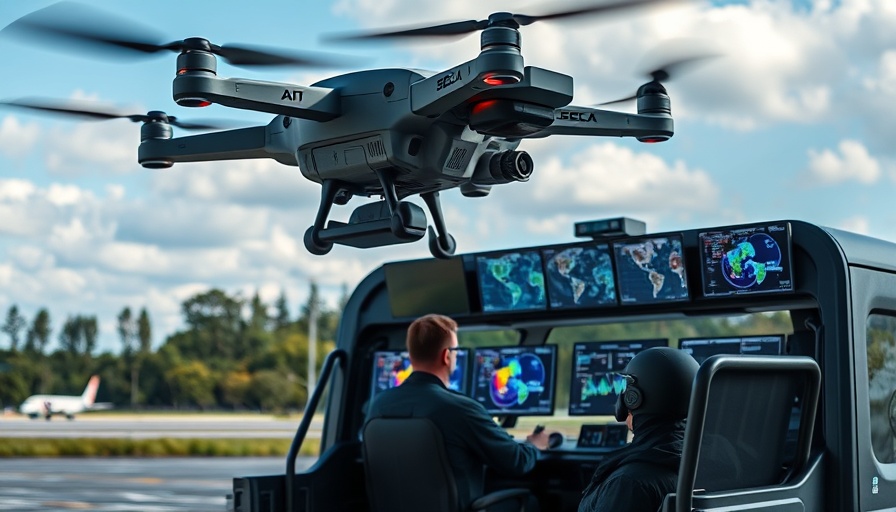
AI Innovations: The Rise of Drone-Based Security
In an era where security concerns are paramount, innovations in technology are stepping up. Recently, a summer concert at Joint Base Charleston in South Carolina served as a real-time testing ground for an AI-powered drone system designed to detect firearms and other threats. Developed by ZeroEyes through their subsidiary ZeroEyes Government Solutions (ZEGS), this drone-based solution showcased its potential to revolutionize security measures, especially in crowded environments.
Transforming Security Protocols with Technology
The ZeroEyes Awareness Kit (ZAK) was deployed during the concert to enhance the safety of over 1,000 personnel and their families. This technology operated on a tethered drone and was set up in under 30 minutes, showcasing how quickly and efficiently new security measures can be implemented. Dustin Kisling, Executive Vice President of ZEGS, highlighted the adaptability of this system, stating that it can specifically target gun detection or broad-spectrum threat assessments based on situational needs.
The Role of Tethered Drones in Event Security
Tethered drones offer unique advantages in security applications. Unlike traditional drones that may face limitations in flight time or battery life, tethered systems benefit from continuous power supply, allowing for prolonged monitoring at events. This was evident during the six-hour deployment at the concert, where ZAK maintained a steady surveillance presence, enhancing reaction times for security officials to potential threats. Furthermore, communication between the drone's analytics system and the base's command post ensures that alerts about detected anomalies are conveyed instantaneously to those who need it.
AI in Threat Detection: A Game Changer
The integration of artificial intelligence in these drones is a significant leap forward. Traditional security methods are often reactive; they deal with threats as they arise. In contrast, AI-powered solutions provide proactive measures, identifying and addressing threats before they escalate. This could potentially reduce response times and protect lives. Moreover, such applications extend beyond military usages, hinting at broader implications for civilian law enforcement and public safety initiatives.
Unique Applications Beyond Military Use
While initially developed for military applications, the potential of the ZAK system stretches into civilian spheres. This technology could be revolutionary for large public gatherings, concerts, sports events, and anywhere large crowds gather. The focus on firearms detection aligns with contemporary concerns about gun violence, making these drones instrumental in proactive threat deterrence.
Looking Ahead: The Future of Drone Security
Predicting trends in drone technology suggests a growing reliance on AI-powered solutions for security. As public safety demands increase, the need for quick, effective response mechanisms will drive innovation in this sector. Continued collaboration between private companies like ZeroEyes and military departments could refine these systems, making them not only more efficient but also more widely accepted as part of standard security protocols.
As industries begin to embrace AI and drone technology for security enhancements, early adopters will likely gain competitive advantages in both protection and operational efficiencies. Organizations interested in tapping into these technologies should start exploring partnerships with tech firms developing advanced solutions.
As we move forward in this rapidly changing landscape, understanding the capabilities of AI-driven technologies like ZAK will become essential for organizational safety strategies.
Conclusion
ZeroEyes' innovative solutions represent just the tip of the iceberg in the potential uses of drones for safety and security. If you are involved in event planning, security, or law enforcement, consider exploring how these technologies can fortify your operational strategies. Understanding and implementing such advancements may soon become crucial in ensuring safety in our increasingly crowded public spaces.
 Add Row
Add Row  Add
Add 




Write A Comment